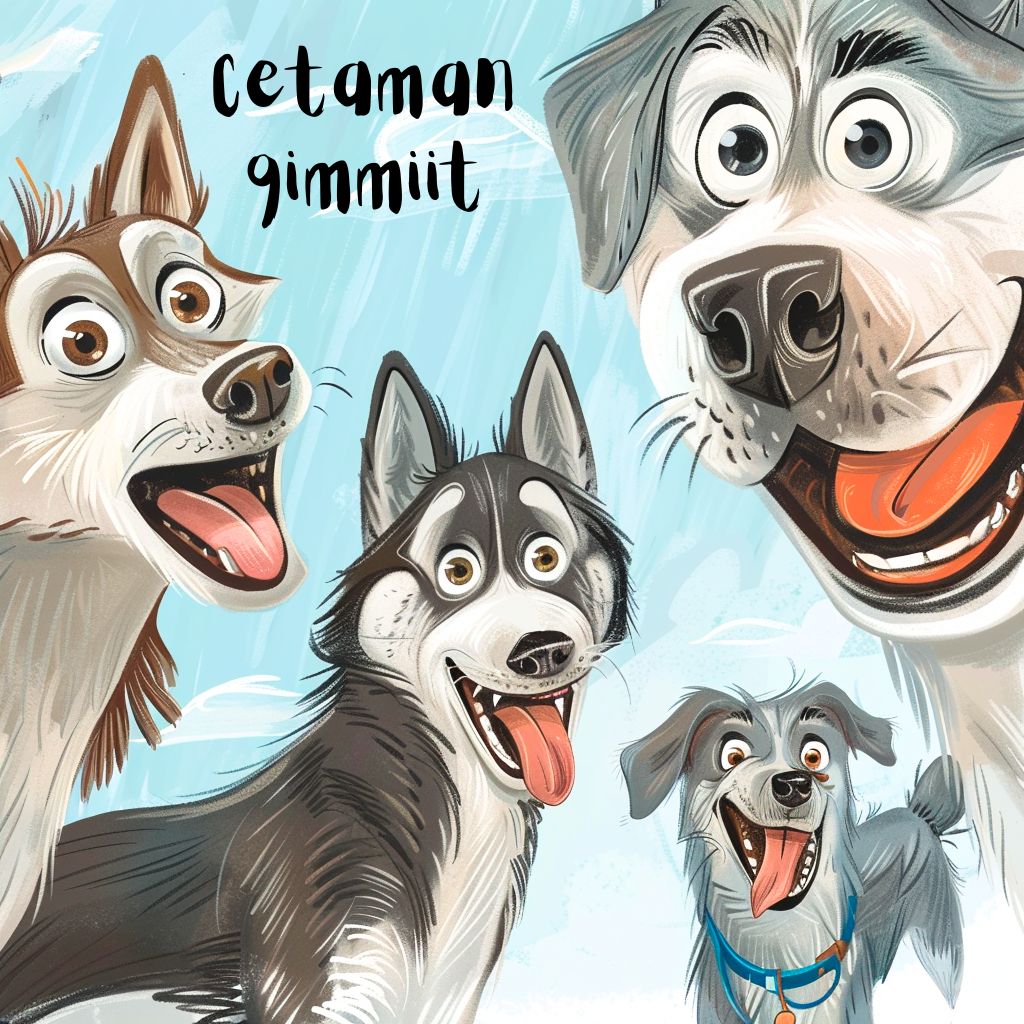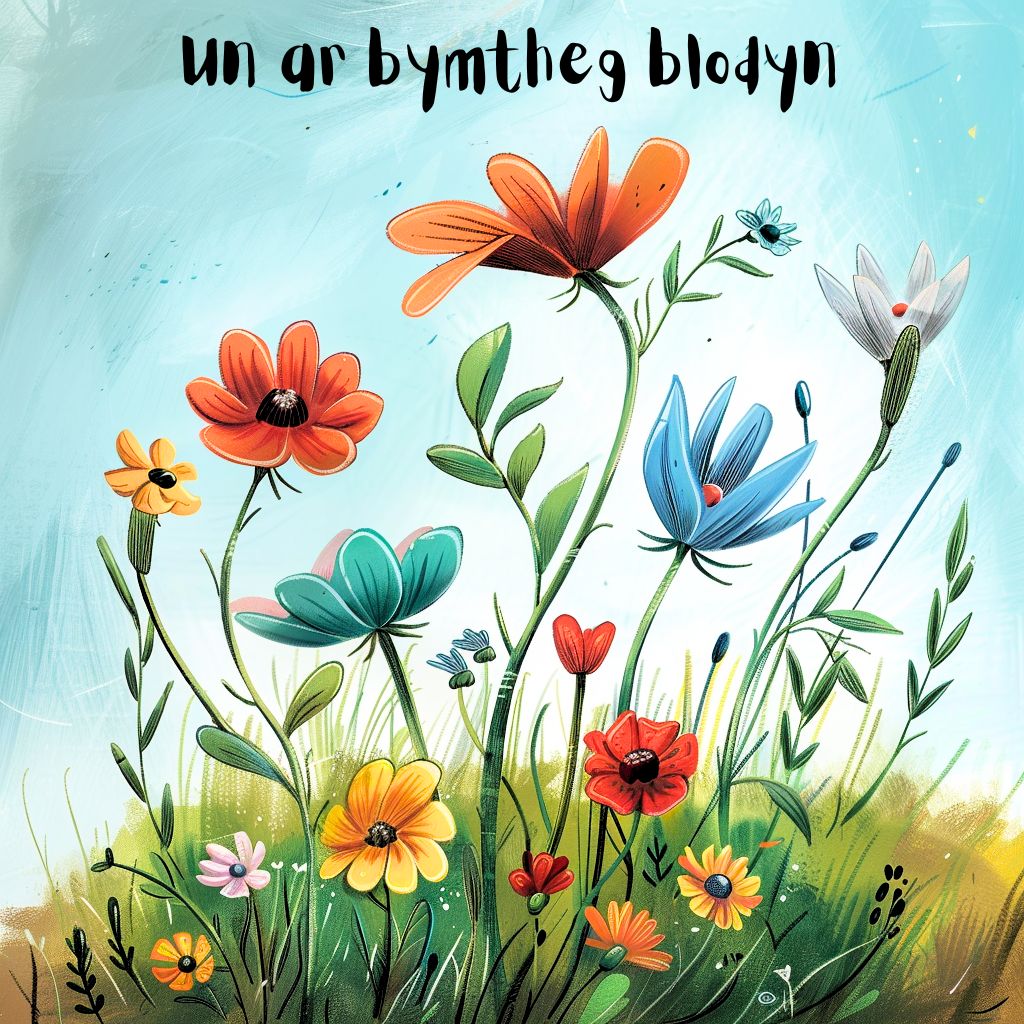Numbers are a universal concept, yet how different cultures approach counting can be as varied as their languages. Some languages have unique counting systems that reflect their cultural practices, environment, and history. Let’s explore 21 languages with counting systems that stand out for their uniqueness and ingenuity.
1. Pirahã
The Pirahã language, spoken by an indigenous tribe in the Amazon rainforest, is renowned for its simplicity and unique approach to numbers. The Pirahã people do not use fixed numerical terms like “one,” “two,” or “three.” Instead, they rely on relative terms to describe quantities, such as “hói” (roughly one or a few) and “hoí” (a bit more or many). This system is deeply embedded in their culture, which values the here and now over abstract concepts.
Examples:
- Hói: Used to indicate a small quantity, this term could be applied to situations where one might normally count “one” or “two” in English. For example, if there is a single fish, the Pirahã might refer to it as “hói.”
- Hoí: This term is used for a larger, but still indeterminate, quantity. It might be used when one counts “three” or “many” in English. For instance, a group of fish might be called “hoí.”
This counting system reflects the Pirahã’s immediate and practical approach to life. They focus on tangible, present experiences rather than abstract concepts. Their language and culture emphasize the importance of what can be directly observed and experienced in the moment, making their unique counting system a fascinating example of how language and culture are intertwined.
2. Tongan
Tongan, spoken in the Kingdom of Tonga, uses a unique counting system that differentiates between singular, dual, and plural forms. This system is particularly interesting because it has specific words for counting pairs and larger groups, reflecting the Tongan culture’s communal nature and the significance of relationships and partnerships.
Examples:
- Taha: Means “one” and is used for counting singular objects.
- Ua: Means “two” and is used for counting pairs.
- Tolu: Means “three” and is used for counting three items, but there are also specific terms for groups:
- Ua’i: Used to describe “two of something” (e.g., a pair of shoes).
- Niua: Means “twenty,” showing the influence of the vigesimal system in traditional Tongan counting, which can also reflect the community aspect by counting larger groups.
Additionally, Tongan uses collective numerals when referring to people and things, showing how the language is deeply connected to social structures and community life. For instance, Tangata means “person,” but when referring to “people” as a collective, Kau tangata indicates the importance of group identity.
The Tongan counting system’s complexity and its distinctions based on quantity and context highlight the cultural emphasis on unity and collective experience. This unique approach to numbers underscores Tonga’s intertwined nature of language and culture.
3. Warlpiri
The Warlpiri people, an Indigenous Australian group from the Northern Territory, use a unique counting system intimately connected to the human body. This system starts with the fingers and extends up the body, using various body parts as reference points for counting. This approach simplifies counting and embeds it deeply within the Warlpiri people’s physical experience.
Examples:
- 1: “Juurlu” (one) – This can be represented by pointing to one finger.
- 2: “Kula” (two) – This can be shown by pointing to two fingers.
- 3: “Marnkurrpa” (three) – This may involve a gesture encompassing more fingers or referring to a grouping in a specific manner.
Beyond three, the Warlpiri counting system involves complex gestures using different body parts to represent larger numbers. For example:
- 4: “Marnkurrpa-maju” – Literally means “three-plus-one,” pointing to four parts such as fingers and possibly the wrist.
- 5: “Watiya-warnu” – Translates to “hand” (five fingers).
In Warlpiri culture, this method of using the body for counting is practical and reflects a deep connection to the land and the physical world. This embodied counting system is a vivid example of how cultural practices influence and shape language. It provides a tactile, memorable way to count, especially useful in a traditional, oral society.
The Warlpiri counting system demonstrates how indigenous knowledge systems can offer unique and effective methods for mathematical concepts, deeply rooted in everyday life and cultural heritage.
4. Yup’ik
The Yup’ik language, spoken by the indigenous Yup’ik people of Alaska, utilizes a vigesimal (base-20) counting system. This system likely developed from the practical use of counting on both fingers and toes, reflecting the harsh Arctic environment where resources and precision are vital.
Examples:
- 1: “Atauciq” (one)
- Example: “Atauciq qimmiq” (one dog)
- 2: “Malruk” (two)
- Example: “Malruk qimmiit” (two dogs)
- 3: “Pingayun” (three)
- Example: “Pingayun qimmiit” (three dogs)
- 4: “Cetaman” (four)
- Example: “Cetaman qimmiit” (four dogs)
- 5: “Talliman” (five)
- Example: “Talliman qimmiit” (five dogs)
In the Yup’ik counting system, numbers above five continue uniquely:
- 6: “Arvinlegen” (six, literally “five-one”)
- Example: “Arvinlegen negeqsurtet” (six books)
- 7: “Malru-legen” (seven, literally “five-two”)
- Example: “Malru-legen negeqsurtet” (seven books)
- 10: “Quyaquq” (ten)
- Example: “Quyaquq negeqsurtet” (ten books)
- 15: “Tallimat quyaquq” (fifteen, literally “three-fives”)
- Example: “Tallimat quyaquq negeqsurtet” (fifteen books)
- 20: “Aruyuk” (twenty)
- Example: “Aruyuk negeqsurtet” (twenty books)
Additionally, the Yup’ik language includes highly specific terms for counting sets. For instance, the term for 400 (twenty times twenty) is “Mamkit.” The practical application of such a system is evident in traditional activities such as hunting and fishing, where accurate counting and distribution of resources are crucial.
This counting system underscores the Yup’ik’s resourcefulness and deep connection to their environment. It also reflects their communal lifestyle, where sharing and precision in managing resources are essential. Using a base-20 system, the Yup’ik counting method is a fascinating example of how indigenous cultures have developed unique mathematical systems tailored to their way of life.
5. Greenlandic
Greenlandic, also known as Kalaallisut, is the official language of Greenland and employs a vigesimal (base-20) counting system. This system is a common trait among Inuit languages and is believed to have developed from the practical need to count on fingers and toes in a harsh Arctic environment. Greenlandic numbers are often compounds, reflecting the structure and logic of the language.
Examples:
- 1: “Ataaseq” (one)
- 2: “Marluk” (two)
- 3: “Pingasut” (three)
- 4: “Sisamat” (four)
- 5: “Tallimat” (five)
For numbers beyond five, Greenlandic uses compound forms:
- 6: “Arfineq marluk” (six, literally “five-one”)
- 7: “Arfineq pingasut” (seven, literally “five-two”)
- 10: “Qul” (ten)
- 15: “Qulingiluat” (fifteen, literally “ten-five”)
- 20: “Inuussutissat” (twenty, literally “all fingers and toes”)
Greenlandic counting is deeply connected to daily life and practical needs, especially in traditional activities such as hunting and fishing, where precise counting of catches and resources is essential. The use of a base-20 system not only reflects the physical counting method using fingers and toes but also indicates a comprehensive approach to managing resources and survival strategies in the Arctic.
The Greenlandic counting system highlights the ingenuity and adaptability of the Inuit people, showcasing how language evolves to meet the practical demands of its speakers. It also provides a fascinating insight into how different cultures develop unique ways to conceptualize and communicate numerical information.
6. Japanese
The Japanese language has an intriguing counting system that uses different counters (助数詞, josuushi) depending on the type of object being counted. This system is known for its specificity and reflects the Japanese attention to detail and context. Counters are used for categories such as long objects, flat objects, small animals, etc.
Examples:
- 1 object (general): 一つ (hitotsu)
- 2 objects (general): 二つ (futatsu)
- 1 long object: 一本 (ippon)
- 2 long objects: 二本 (nihon)
- 1 flat object: 一枚 (ichimai)
- 2 flat objects: 二枚 (nimai)
For different categories, specific counters are used:
- Small animals: 匹 (hiki)
- 1 small animal: 一匹 (ippiki)
- 2 small animals: 二匹 (nihiki)
- Books: 冊 (satsu)
- 1 book: 一冊 (issatsu)
- 2 books: 二冊 (nisatsu)
- Machines and vehicles: 台 (dai)
- 1 car: 一台 (ichidai)
- 2 cars: 二台 (nidai)
- People: 人 (nin)
- 1 person: 一人 (hitori)
- 2 people: 二人 (futari)
This system can be complex for learners but adds precision and nuance to the language. Counters demonstrate how deeply context and categorization are embedded in Japanese culture, influencing how people perceive and interact with the world around them. It also reflects the importance of clarity and specificity in communication, ensuring the listener understands exactly what is being referred to.
The Japanese counting system showcases the country’s rich linguistic tradition and provides insight into how language can shape and reflect cultural practices.
7. Korean
The Korean language employs two distinct numbering systems: native Korean and Sino-Korean. Each system is used in different contexts, reflecting Korea’s historical and cultural influences from China. The native Korean system is typically used for smaller numbers and everyday counting, while the Sino-Korean system is used for larger numbers and formal contexts.
Examples:
Native Korean Numbers:
- 1: 하나 (hana)
- 2: 둘 (dul)
- 3: 셋 (set)
- 4: 넷 (net)
- 5: 다섯 (daseot)
Sino-Korean Numbers:
- 1: 일 (il)
- 2: 이 (i)
- 3: 삼 (sam)
- 4: 사 (sa)
- 5: 오 (o)
Native Korean numbers are often used when counting small quantities, such as people or objects up to 99:
- One person: 한 사람 (han saram)
- Two apples: 사과 두 개 (sagwa du gae)
Sino-Korean numbers are typically used for larger numbers, dates, money, phone numbers, and academic contexts:
- Twenty: 이십 (isip)
- One hundred: 백 (baek)
The dual-numbering system showcases the blend of indigenous Korean culture and historical Chinese influence. For instance, for the number 11, Koreans may use “열하나 (yeolhana)” in native Korean, whereas “십일 (ship-il)” would be the Sino-Korean equivalent.
This distinctive feature of the Korean language highlights how historical and cultural influences shape linguistic practices. It also reflects the practical application of different counting methods in everyday life and formal settings, providing a fascinating insight into how Koreans manage numbers in diverse contexts.
8. Ainu
The Ainu language, spoken by the indigenous Ainu people of Japan, employs a vigesimal (base-20) counting system. This system reflects the ancient traditions and unique cultural practices of the Ainu people, who deeply connect to nature and their environment. The Ainu counting system emphasizes larger groups and communal activities, reflecting their societal structure and cultural priorities.
Examples:
- 1: “Sin” (one)
- 2: “Tu” (two)
- 3: “Re” (three)
- 4: “Ine” (four)
- 5: “Ashikne” (five)
For numbers above five, the Ainu language uses a base-20 structure:
- 6: “Ashikne-uta-sin” (six, literally “five and one”)
- 7: “Ashikne-uta-tu” (seven, literally “five and two”)
- 10: “Wanse” (ten)
- 15: “Wanse-uta-ashikne” (fifteen, literally “ten and five”)
- 20: “Hotsuwanse” (twenty, literally “one complete set of twenty”)
The vigesimal system in Ainu is a striking example of how indigenous cultures develop practical counting methods that are deeply rooted in their way of life. This system is likely linked to counting on both fingers and toes, providing a comprehensive and efficient method for managing numbers.
The Ainu counting system highlights the resilience and uniqueness of the Ainu culture, showcasing how traditional practices are preserved through language. This system serves practical purposes and embodies the cultural heritage and identity of the Ainu people, offering valuable insights into their worldviews and ways of life.
9. Basque
The Basque language, spoken in the Basque Country in Spain and France, features a unique counting system that combines elements of both decimal (base-10) and vigesimal (base-20) systems. This blend makes Basque counting distinct and reflective of its rich cultural heritage.
Examples:
- 1: “Bat” (one)
- 2: “Bi” (two)
- 3: “Hiru” (three)
- 4: “Lau” (four)
- 5: “Bost” (five)
For numbers beyond five, Basque uses a combination of decimal and vigesimal forms:
- 10: “Hamar” (ten)
- 11: “Hamaika” (eleven, literally “ten-one”)
- 15: “Hamabost” (fifteen, literally “ten-five”)
- 20: “Hogei” (twenty)
The Basque language also has a unique way of forming numbers above twenty, often using compound forms:
- 21: “Hogeita bat” (twenty-one, literally “twenty and one”)
- 30: “Hogeita hamar” (thirty, literally “twenty and ten”)
- 40: “Berrogei” (forty, literally “two twenties”)
The combination of base-10 and base-20 systems in Basque counting reflects historical influences and the language’s adaptability. It provides a fascinating example of how languages evolve and incorporate different numerical systems to meet the needs of their speakers.
The Basque counting system showcases the Basque people’s linguistic diversity and cultural richness. It also highlights how historical and regional factors shape language development, making Basque a unique linguistic treasure in Europe.
10. Welsh
The Welsh language, spoken in Wales, uses a traditional vigesimal (base-20) counting system, although modern Welsh often employs a decimal system for ease. The traditional system reflects ancient Celtic influences and adds a layer of historical depth to the language.
Examples:
- 1: “Un” (one)
- Example: “Un cwpanaid o win” (one glass of wine)
- 2: “Dau” (two)
- Example: “Dau lyfr” (two books)
- 3: “Tri” (three)
- Example: “Tri blât” (three plates)
- 4: “Pedwar” (four)
- Example: “Pedwar ci” (four dogs)
- 5: “Pump” (five)
- Example: “Pump ffrwyth” (five fruits)
For numbers beyond ten, Welsh traditionally uses a vigesimal system:
- 10: “Deg” (ten)
- Example: “Deg afal” (ten apples)
- 15: “Un ar bymtheg” (fifteen, literally “one on fifteen”)
- Example: “Un ar bymtheg blodyn” (fifteen flowers)
- 20: “Ugain” (twenty)
- Example: “Ugain eirlys” (twenty snowdrops)
The traditional system counts up to twenty and then uses combinations of twenties for larger numbers:
- 21: “Un ar hugain” (twenty-one, literally “one on twenty”)
- Example: “Un ar hugain o bobl” (twenty-one people)
- 40: “Deugain” (forty, literally “two twenties”)
- Example: “Deugain cath” (forty cats)
- 60: “Triugain” (sixty, literally “three twenties”)
- Example: “Triugain llun” (sixty pictures)
- 80: “Pedwar ugain” (eighty, literally “four twenties”)
- Example: “Pedwar ugain coeden” (eighty trees)
Modern Welsh, however, often simplifies these forms, particularly in educational and formal contexts:
- 20: “Dau ddeg” (twenty, literally “two tens”)
- Example: “Dau ddeg llyfr” (twenty books)
- 30: “Tri deg” (thirty, literally “three tens”)
- Example: “Tri deg peli” (thirty balls)
This dual usage of decimal and vigesimal systems in Welsh reflects a blend of modern convenience and historical tradition. The traditional counting system underscores the language’s Celtic roots and provides a glimpse into the historical practices of counting and trade.
The Welsh counting system is a testament to the language’s resilience and adaptability. It shows how modern influences can coexist with ancient traditions, offering a rich mixx of linguistic history and cultural identity.
11. Georgian
The Georgian language features a unique counting system that blends traditional elements with modern numerical concepts. Georgian numbers often use compound forms and special terms that make the system distinctive and reflect its rich linguistic heritage.
Examples:
- 1: “erti” (one)
- 2: “ori” (two)
- 3: “sami” (three)
- 4: “otxi” (four)
- 5: “xuti” (five)
In Georgian, the formation of numbers from 11 to 19 is unique:
- 10: “ati” (ten)
- 11: “tertmet’i” (eleven, literally “one-teen”)
- 15: “txutmet’i” (fifteen, literally “five-teen”)
- 20: “otsi” (twenty)
For higher numbers, Georgian uses a combination of base-10 and base-20 systems:
- 21: “otsdat ert’i” (twenty-one, literally “twenty and one”)
- 30: “otsdaati” (thirty, literally “twenty and ten”)
- 40: “ormotsi” (forty, literally “two twenties”)
- 50: “ormotsdat ati” (fifty, literally “two twenties and ten”)
- 100: “asi” (hundred)
This blend of decimal and vigesimal counting demonstrates the Georgian language’s complexity and historical influences. The use of compound forms for numbers, particularly in the teens and above twenty, highlights how the language has evolved to incorporate practical and cultural elements.
Georgian’s counting system provides insight into the country’s rich cultural history and linguistic development. It shows how traditional methods can be adapted and maintained alongside modern practices, creating a unique numerical system that is both functional and culturally significant.
Our journey through these 11 languages with unique counting systems has shown just how inventive and diverse human cultures can be. From the Amazonian Pirahã’s minimalist approach to the detailed counters of Japanese, each system offers a window into its speakers’ daily lives and histories.
We explored:
- The Pirahã people, whose counting reflects an immediate and practical worldview.
- The Tongan system, which emphasizes community and relationships.
- Warlpiri counting, intimately connected to the human body.
- The Yup’ik and Greenlandic vigesimal systems, born out of Arctic practicality.
- Japanese counters, showcasing a keen attention to detail.
- The Korean dual-numbering system, blending indigenous and Sino influences.
- The Ainu traditional base-20 system, highlighting cultural heritage.
- The Basque mix of decimal and vigesimal systems, reflecting ancient Celtic roots.
- The Welsh traditional vigesimal system, preserving historical practices.
- The Georgian combination of traditional and modern numerical concepts.
These systems are more than just counting methods—they are integral parts of each culture’s identity and heritage. They remind us that while numbers are universal, the ways we interact with them are wonderfully diverse.
So, whether you’re a language enthusiast, a cultural explorer, or just love a good numerical quirk, these counting systems offer a fun and engaging look at how we make sense of the world through numbers.

Hey fellow Linguaholics! It’s me, Marcel. I am the proud owner of linguaholic.com. Languages have always been my passion and I have studied Linguistics, Computational Linguistics and Sinology at the University of Zurich. It is my utmost pleasure to share with all of you guys what I know about languages and linguistics in general.






